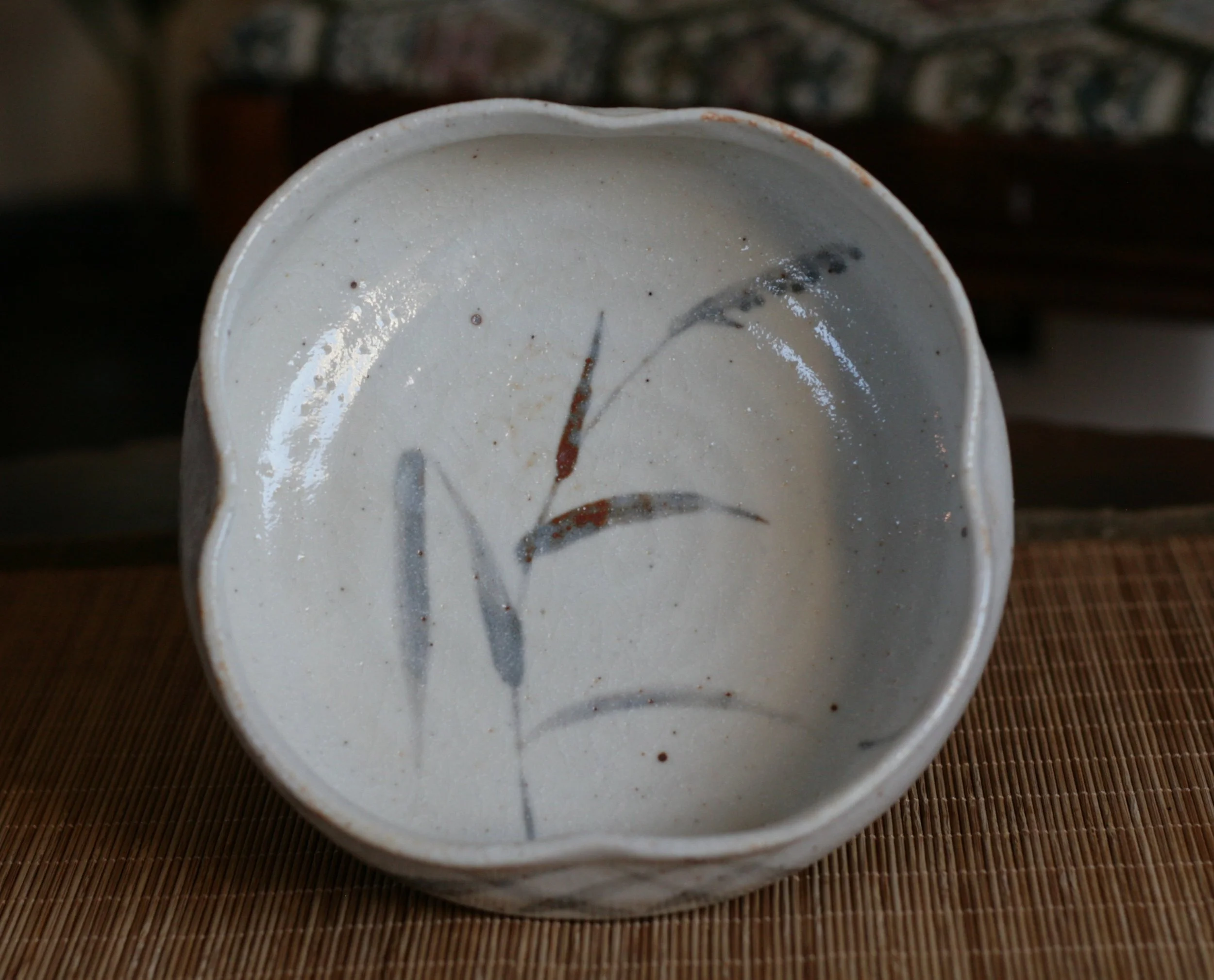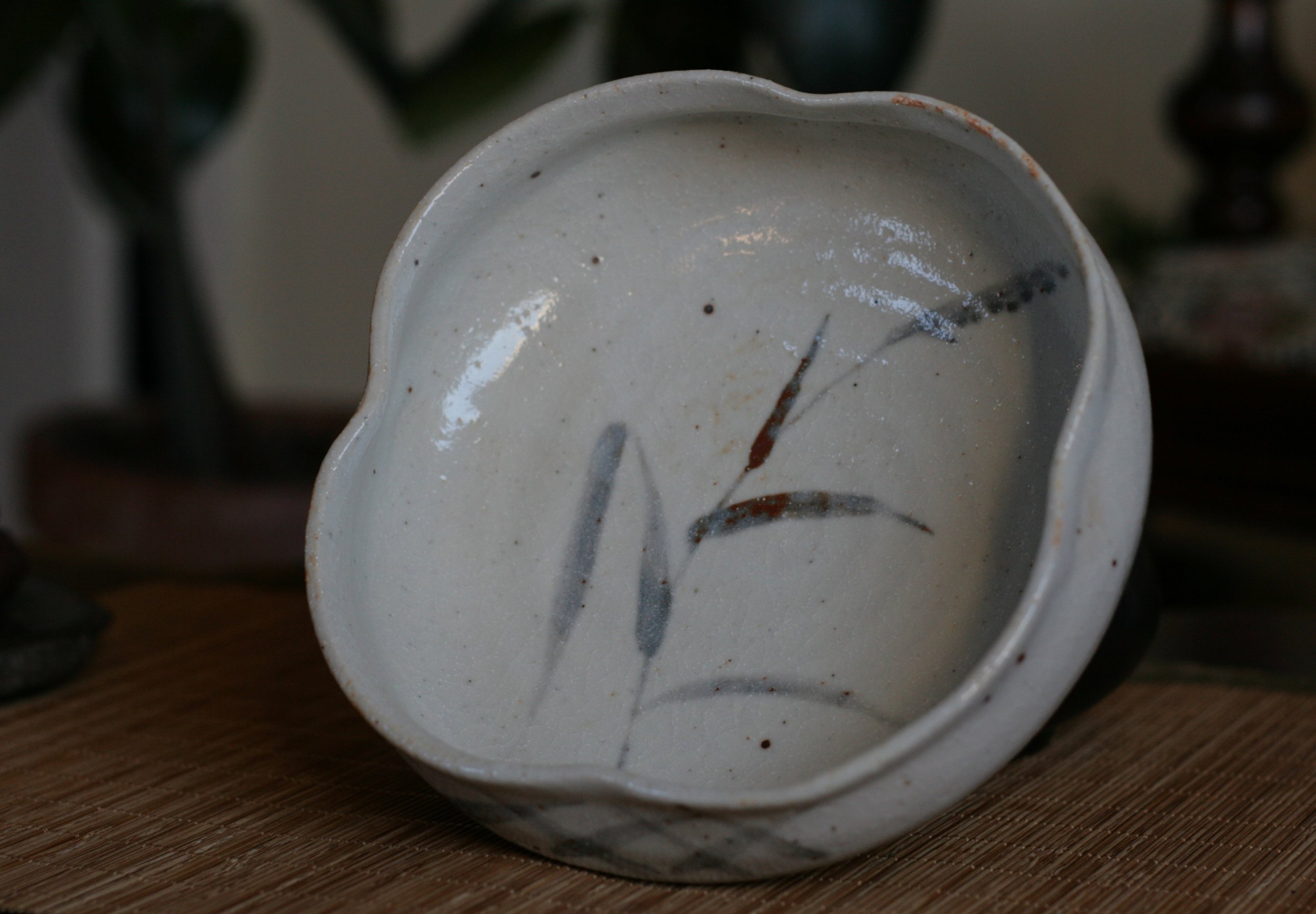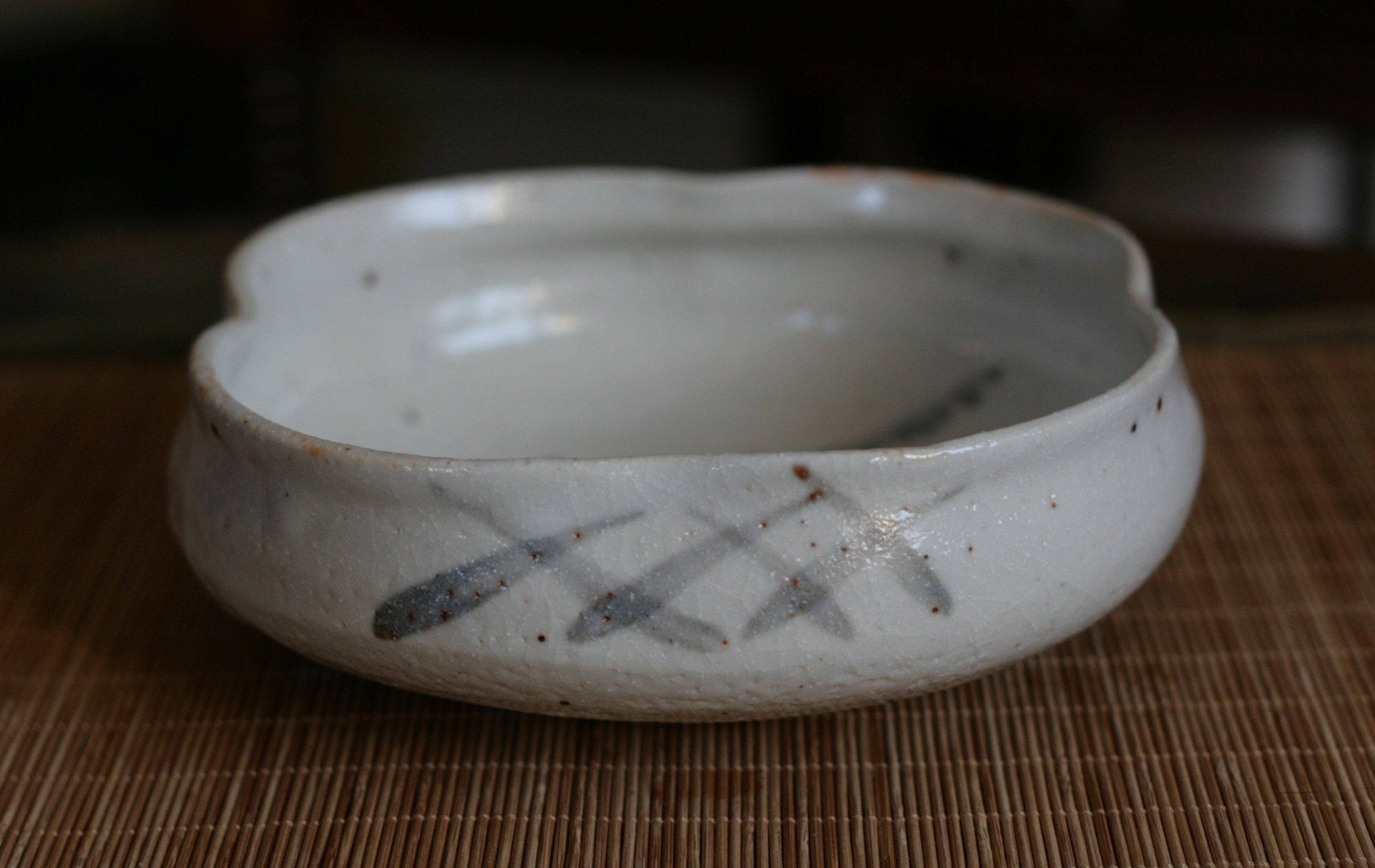 Image 1 of 11
Image 1 of 11

 Image 2 of 11
Image 2 of 11

 Image 3 of 11
Image 3 of 11

 Image 4 of 11
Image 4 of 11

 Image 5 of 11
Image 5 of 11

 Image 6 of 11
Image 6 of 11

 Image 7 of 11
Image 7 of 11

 Image 8 of 11
Image 8 of 11

 Image 9 of 11
Image 9 of 11

 Image 10 of 11
Image 10 of 11

 Image 11 of 11
Image 11 of 11












Shino yaki bowl with bamboo painting by Teruyuki Mizuno #1 with tomobako (66)
Shino yaki bowl with bamboo painting by Teruyuki Mizuno #1 with tomobako. 17cm x17cm x 6cm.
Shino yaki – is a traditional form of Japanese ceramics that originated in the Mino area in what is now Gifu prefecture in the 16th century. Shino yaki is characterized by a thick white glaze created with a mixture of feldspar and clay, although the colors of the vessels range from orange to gray as well based on firing technique and other clay slips utilized. This glaze was the first white glaze used in Japan. Shino yaki was historically associated with Mino yaki and Seto yaki, but can now be used as a term to describe any ware that utilizes a shino glaze. This glaze technique fell out of fashion in the 19th century and the formula was only rediscovered in the 1930’s and 40’s by Toyozo Arakawa and Hajime Kato. Incidentally, shino glazes are also very popular within the American tradition of ceramics, although it uses different formulas for the glaze from what is traditionally utilized in Japan.
Shino yaki bowl with bamboo painting by Teruyuki Mizuno #1 with tomobako. 17cm x17cm x 6cm.
Shino yaki – is a traditional form of Japanese ceramics that originated in the Mino area in what is now Gifu prefecture in the 16th century. Shino yaki is characterized by a thick white glaze created with a mixture of feldspar and clay, although the colors of the vessels range from orange to gray as well based on firing technique and other clay slips utilized. This glaze was the first white glaze used in Japan. Shino yaki was historically associated with Mino yaki and Seto yaki, but can now be used as a term to describe any ware that utilizes a shino glaze. This glaze technique fell out of fashion in the 19th century and the formula was only rediscovered in the 1930’s and 40’s by Toyozo Arakawa and Hajime Kato. Incidentally, shino glazes are also very popular within the American tradition of ceramics, although it uses different formulas for the glaze from what is traditionally utilized in Japan.